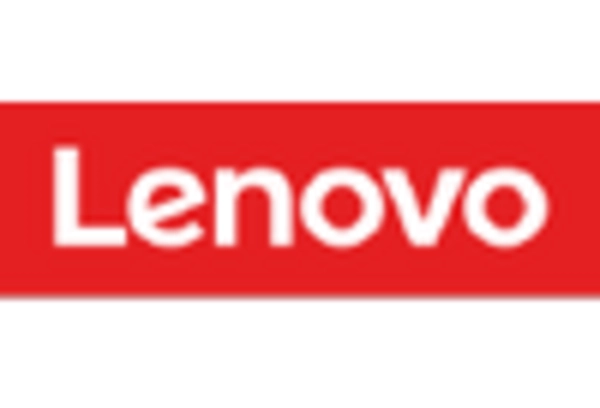Growth of Online Learning Platforms
The rise of online learning platforms in Japan is significantly impacting the kids tablet market. With many educational institutions offering remote learning options, parents are seeking reliable devices that can support their children's educational needs. The market for online learning platforms has expanded, with a reported increase of 30% in subscriptions over the past year. This trend indicates that the kids tablet market is poised for growth, as tablets become essential tools for accessing online courses and resources. The convenience and versatility of tablets make them an attractive option for parents navigating the evolving educational landscape.
Rising Demand for Interactive Learning
The kids tablet market is experiencing a surge in demand for interactive learning applications. Parents and educators recognize the value of engaging educational content that promotes active participation among children. This trend is reflected in the increasing number of educational apps available, with over 10,000 dedicated to children in Japan alone. The kids tablet market is likely to see growth as more parents opt for tablets that offer interactive features, such as gamified learning experiences. This shift towards interactive learning tools may enhance children's educational outcomes, making tablets a preferred choice for parents.
Increasing Digital Literacy Initiatives
The push for digital literacy in Japan appears to be a significant driver for the kids tablet market. Educational institutions and government bodies are increasingly integrating technology into their curricula, promoting the use of tablets as essential learning tools. Reports indicate that approximately 70% of schools in urban areas have adopted digital learning methods, which often include the use of tablets. This trend suggests that parents are more inclined to invest in tablets for their children to ensure they are equipped with necessary digital skills. The kids tablet market is likely to benefit from this growing emphasis on technology in education, as parents seek devices that facilitate learning and engagement.
Integration of Health and Wellness Features
The incorporation of health and wellness features in tablets is emerging as a notable driver for the kids tablet market. Parents are becoming more conscious of their children's screen time and overall well-being. Tablets that offer features such as activity tracking, educational content on health, and parental controls are gaining traction. This trend suggests that the kids tablet market may evolve to include devices that not only entertain but also promote healthy habits. As awareness of children's health continues to grow, the demand for tablets with integrated wellness features is likely to increase.
Expansion of E-Book and Digital Library Access
The proliferation of e-books and digital libraries in Japan is influencing the kids tablet market positively. With a growing number of children accessing literature through digital means, parents are increasingly purchasing tablets that provide access to a wide range of e-books. Recent data indicates that e-book sales in Japan have risen by 25% in the last year, highlighting a shift in reading habits among children. The kids tablet market stands to gain from this trend, as tablets equipped with e-book capabilities become essential tools for fostering a love of reading in young learners.
















Leave a Comment